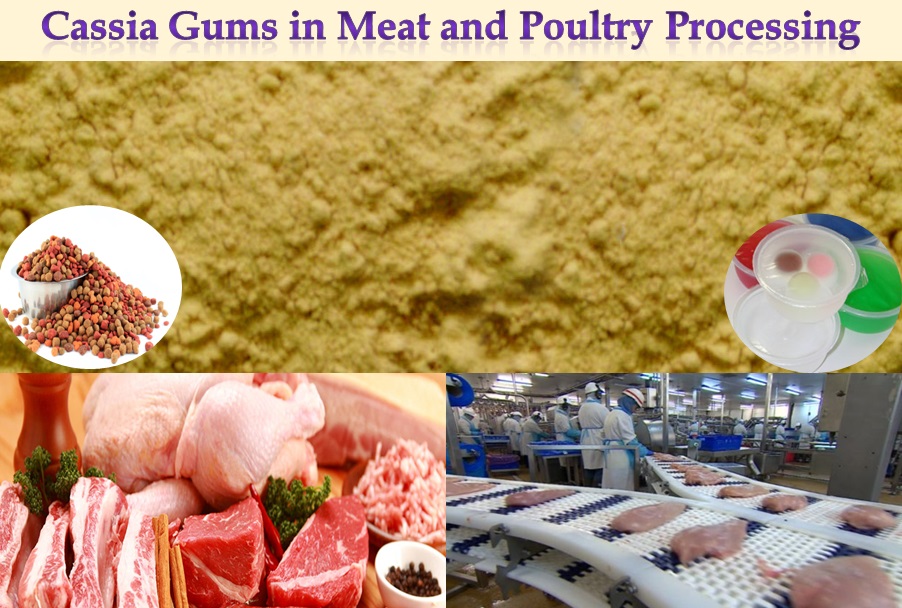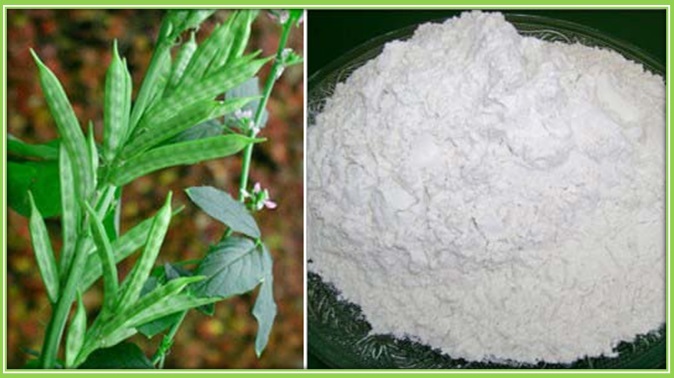The cassia gum is the grounded and purified endosperm of the seeds of the cassia tora plant in the family of legumes. The plant is widely cultivated in Indian sub-continent, well distributed but in larger acreages in the province of Rajasthan. It also grows in the areas of the Himalayas in Nepal, Sri Lanka, west china and other tropical areas.
Physical and Chemical Composition
The powder is pale yellow in color with a distinguishable smell. It readily dissolves in hot water and on cooling creates a viscous liquid. These groups of powders are referred to as hydrocolloids and are used as gelling agents in various industries.
The cassia gum powder readily combines with other hydrocolloids such as the carrageen and the xanthan gum to form very stable and long lasting gels with very good texture. The chemical makeup of the plant consists of high molecular weight polysaccharides (up to 300,000 units) called galactomannans, which are the mannose to glucose ratio of 5:1 up to 8:1.
Various Industrial Applications
- Canned pet foods: the gum is used as a gelling agent in combination with carr It also enhances texture and appearance of the foods.
- Air freshener Gels, to provide the gelling property in manufacture of air freshener.

Applications in Meat Processing
It is used primarily as moisture retention agent, as a thickener and for ensuring the surface consistency of processed meats. It also enhances the palatability of the processed foods. This has caused an increase in demand for the cassia gum in the packing of processed foods.
The key macro-economic activity influencing the market for cassia gum is the growth in meat and poultry processing, the dairy ingredients market, confectionaries and the pet food market. Currently, manufacturers are introducing the cassia gum into their ingredients as a good substitute to the synthetic hydrocolloids.
The processed meat market is estimated to be more than 600 billion dollars globally by the year 2020. This will create a huge uptake for the cassia gum powder as manufacturers turn to it for their gelling and thickening processes.
Canned meat products for Pets are another market segment that is bound to demand cassia gum granules. This is because it is stable in the food products and is generally regarded as an organic food. The ability to retain the texture in these processed meat means that protein and soluble fat content remain higher in value than the dried meat.
Use in Poultry Processing
It is also widely used in poultry processing and poultry recipes due to its stabilizing, thickening and emulsifying properties as well as the water retention characteristics. In poultry processing, research has shown that the product can remain stable in storage for up to 20 months without changes in the chemical structure. The gum also exhibits hygroscopic characteristicsup to a moisture level of 12%. It also has no interactions with the nutrient content of the foods.
Conclusion
Cassia gum is rapidly gaining popularity in the food processing sectors mainly in meat and poultry products processing. This is due to its availability, affordability and effectiveness as a texturizer and gelling properties. The market demand is set to continue increasing with these positive factors.


